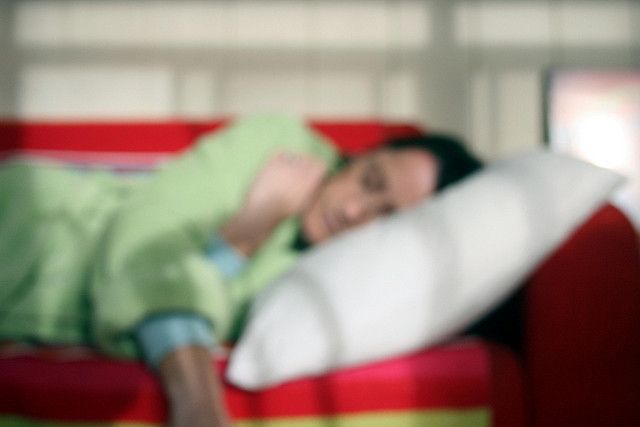[dt_button link=»http://d165vjqq8ey7jy.cloudfront.net/mp3/26991/se-7704s.mp3″ target_blank=»true» button_alignment=»default» animation=»fadeIn» size=»small» style=»default» bg_color_style=»custom» bg_color=»#333333″ bg_hover_color_style=»custom» bg_hover_color=»#444444″ text_color_style=»custom» text_color=»#ffffff» text_hover_color_style=»custom» text_hover_color=»#dddddd» icon=»fa fa-cloud-download» icon_align=»left»]Скачать[/dt_button]
[dt_divider style=»thin» /]
Transcript:
Voice 1
Welcome to Spotlight. I’m Liz Waid.
Voice 2
And I’m Ryan Geertsma. Spotlight uses a special English method of broadcasting. It is easier for people to understand — no matter where in the world they live.
Voice 3
“My story starts when I was 12 years old. I was giving some school work to my teacher. Then I saw that half of it was missing. But when I looked at it again, a different part was missing. It was frightening for a 12 year old to understand. I had a difficult time explaining what I was seeing. Then the headache started. I wanted to shout, it hurt so badly. It was really sharp. And I felt like I was going to be sick.”
Voice 1
This is the story of a woman named Ruth. She describes her first migraine on the website migraine.com. Ruth is only one of thousands of people who suffer from migraines. Many people think migraines are serious headaches — a very bad pain in the head. But migraines are more than a bad headache. This pain can be so bad that people cannot work or even get out of bed. Scientists are learning more about what causes migraines and how to help people who have them. Today’s Spotlight is on migraines.
Voice 2
The World Health Organization says that one person in ten suffers from migraines. Women are three times more likely than men to have them. Many children have migraines too. And migraines are hereditary – people who have them often have another family member who does too.
Voice 1
A migraine is different than other kinds of head pain. Dr. Perry Richardson is a neurologist at George Washington University Hospital. He studies the human brain. He explained the signs of a migraine to the news organization NPR.
Voice 4
“The pain may or may not be on only one side of the head. It is often connected with sensing things very strongly, such as light or sound. Before the pain happens, there may be a warning sign. This is often a change in what the person sees. It is called a visual aura. And even before the aura, there is a first warning. Many people remember this if you ask them about it. It is a strange feeling a day or two before. So all these different signs help me recognize that this is a migraine.”
Voice 2
Doctors used to think that migraines were caused by changes in blood vessels. Now, experts are finding that it is probably a brain disorder. The brain of a person who gets migraines may look the same as a normal brain. But doctors think that it works in a different way. Dr. David Dodick is a neurologist at the Mayo Clinic. He describes the brain of a migraine sufferer:
Voice 5
“We recognize now that it is not just during a migraine attack. Even in between attacks the brain is using sensory information in an unusually active way. So people thought migraines just happened some of the time, and you are normal in between. But we now recognize that it is an unusual way of working. It continues even between attacks.”
Voice 1
For many people the worst part of a migraine is that it negatively affects their life. Migraines can make it difficult for people to enjoy experiences. Donna Love shared her story on the website, mychronicmigraine.com:
Voice 6
“I experience migraines 15 days of every month. And each headache lasts four hours or longer. A migraine is very painful. But there is nothing that hurts more than having your young daughter ask you: «Mommy, is this going to be a day you can play with me? Or do you have to stay in bed because of a headache?»
Voice 2
But there is hope for people who suffer from migraines. There are ways to control the pain. One way is to recognize the triggers. Triggers are things that can make migraines more likely. They are different for different people. Some people are affected by changes in light or the weather. Other people get migraines when they become worried. Some kinds of food and drink can also trigger migraines. Teri Robert is a migraine patient. She wrote a book called «Living Well with Migraine Disease and Headache.» She explains to NPR how important it is to know migraine triggers:
Voice 7
“A very first major step in managing migraines is managing the triggers. If you know the triggers, avoid them when at all possible. Sleeping enough and at the same time every day is very important to people who have migraines. And they should avoid becoming too tired or too thirsty.”
Voice 1
Roberts says that this is very important if you have a child who suffers from migraines. Parents should know the triggers for their child. This may help to reduce the chance of getting a migraine. But it will not make the pain go away.
Voice 2
People use medical treatments to stop the extreme pain of migraines. Some people take strong medicine for migraine headaches. The medicine stops the feeling in the nerve endings and the brain. But these medicines do not work for everyone. Also, people who have some other medical conditions such as heart disease cannot take them. And the medicines can have other negative effects. Some of the medicines can even cause another headache later. Another medical treatment is injections of a drug called Botox. This makes the nerves and muscles more calm. The patient then feels the pain of a migraine less strongly.
Voice 1
But people also use treatments that are not medical. Traditionally, people have used herbs to treat migraines. These are plants that can have the ability to heal. Feverfew became especially popular in England in the 1980s. People who did not want to take stronger medicines would drink tea made from feverfew. Other people visit specialists in massage to calm the body. Other people visit acupuncturists. These healers put small sharp needles in particular parts of the body. And many people find that they get fewer migraines if they live a healthy lifestyle. This includes getting enough sleep and eating healthy food.




